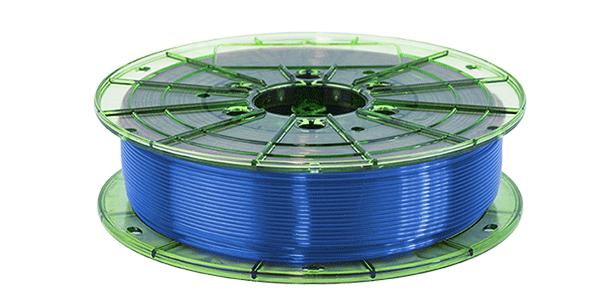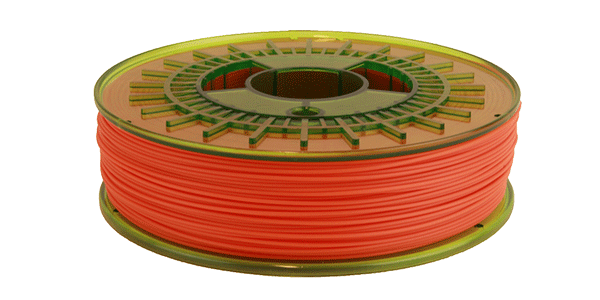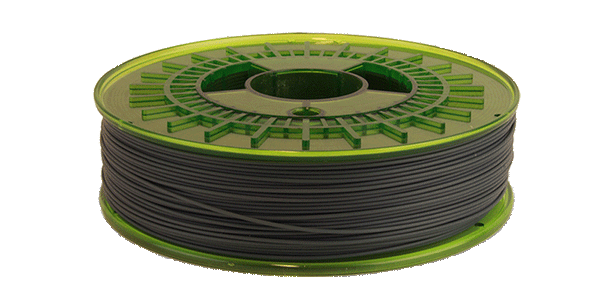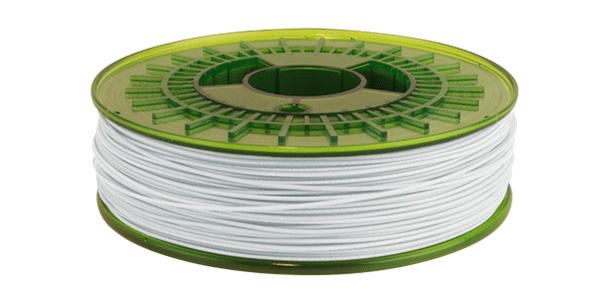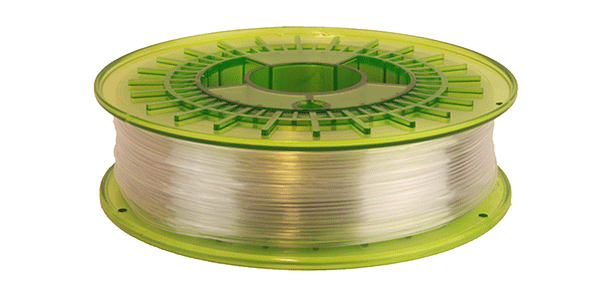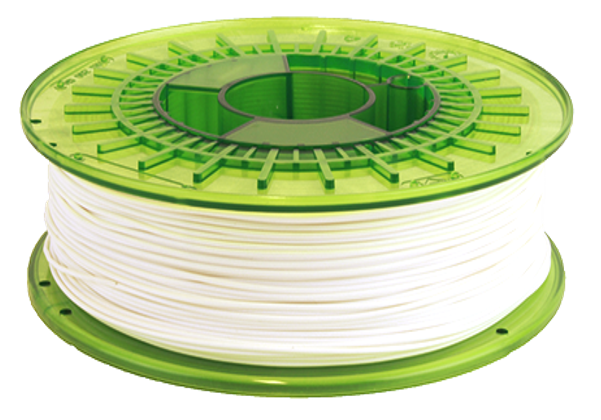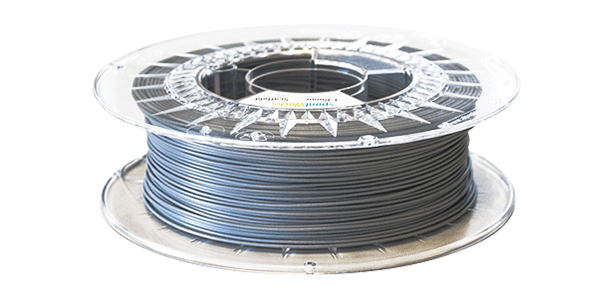Extrusion temperature
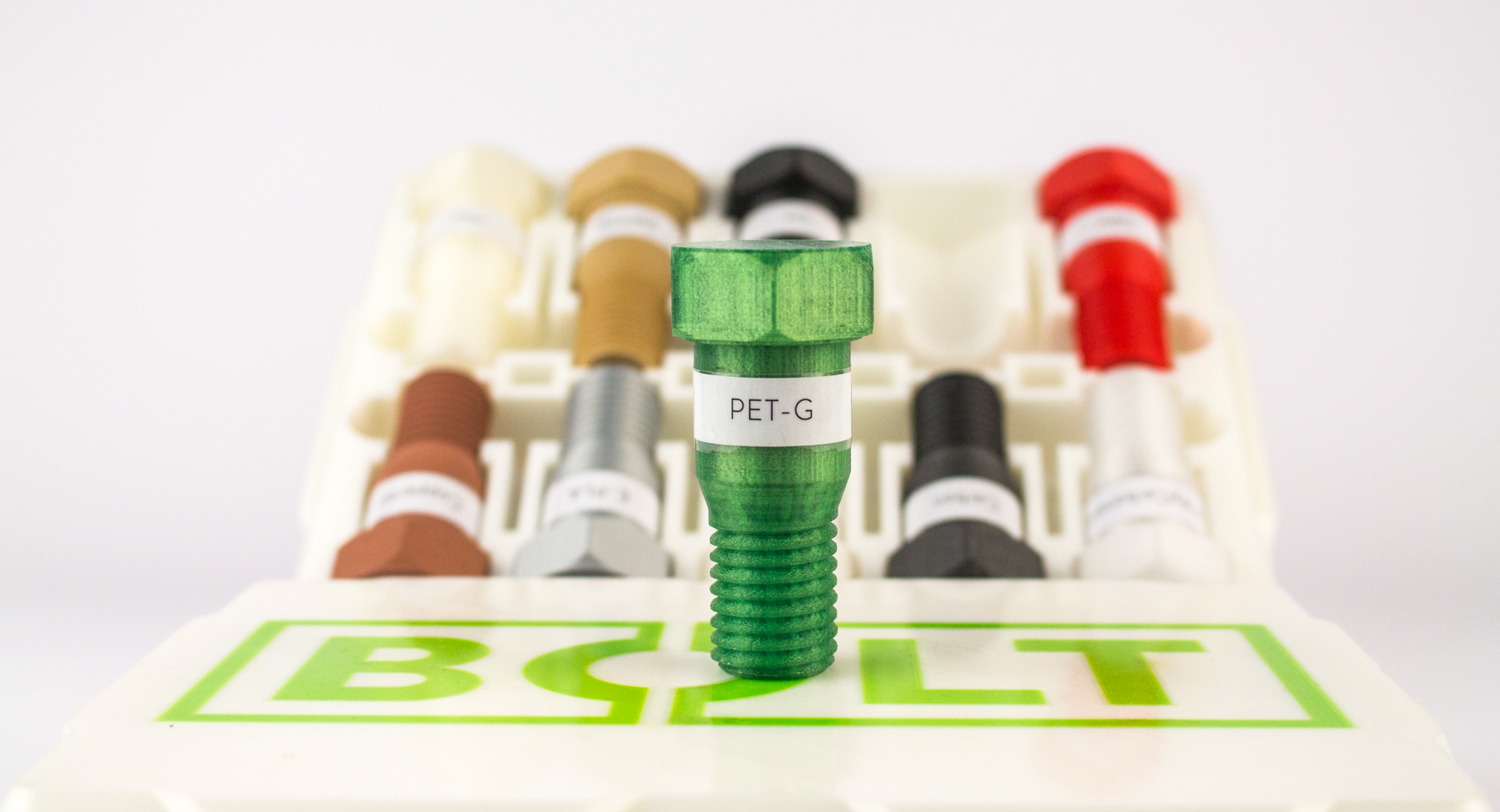
PETG
Polyethylene Terephthalate is the most widely used plastic globally and is used to create various products like standard water bottles. PETG on the other hand is specifically designed for 3D printing applications and is considered the bridge in terms of mechanical properties between PLA and ABS. It offers strength, impact resistance and chemical resistance without having issues like warping.
Having similar properties to PLA and ABS, PETG is a great filament for a number of applications that require more durability than PLA can offer, while being easier to print with than ABS.
Printing tips
Print Speed: We recommend printing with lower than average print speed if the desire is to achieve better strength properties due to better layer adhesion.
Storage: Store the filament in dry areas since it absorbs moisture.
Water Resistant
Impact Resistant
Chemical Resitant
PETG PRINTING GUIDELINES

Bed temperature
± 70 ºC

Weight (kg)
0.75

Warping
Low

Layer bonding
High
Suitable for
Bolt Pro, Xeed

Filament diameter (mm)
1.75
Applications
Visual Prototypes

PETG is a very durable material and appears translucent. It has a glossy finish which is good for certain visual prototypes giving the part a solid, clean finish. You can get various colors which have the same translucent finish.
Functional Prototypes

PETG is very durable, it's more ductile than other filaments while still being strong and is ideal for functional prototypes. Furthermore, its layer adhesion properties are high, which makes it handle stresses well while reducing cracking and warping.

